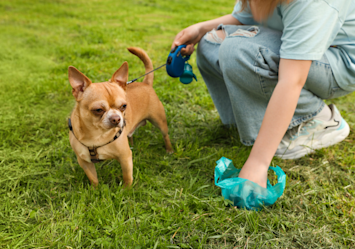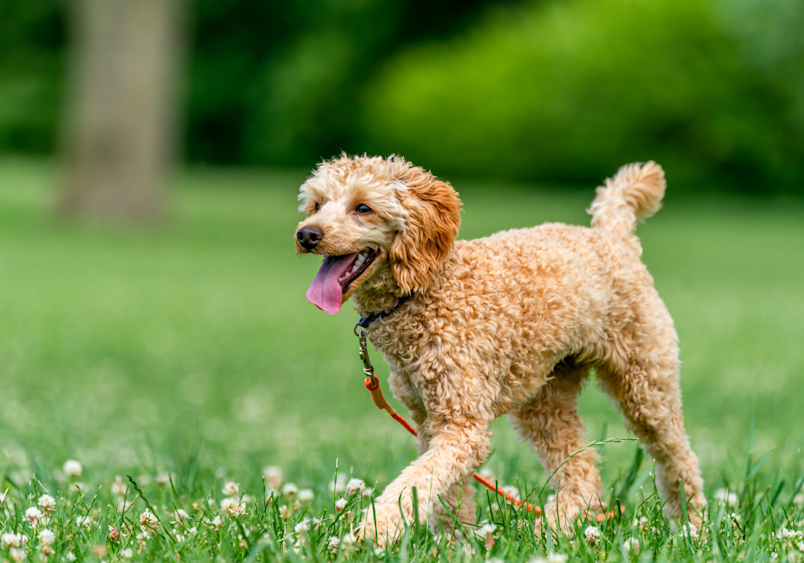
Ever found yourself pondering your pup's bathroom habits? Like their obsession with eating poop. Why do they eat poop? Scooping poop isn't exactly the highlight of pet parenthood, but what your dog leaves behind can actually tell you a lot about their health! We're diving deep into the world of dog poop, uncovering the secrets to normal bowel movements and what to watch out for.
Why Is My Dog Pooping So Much? Understanding Your Dog's Bathroom Habits
One of the most common topics discussed in veterinary clinics is poop (sometimes more clinically called feces or stool). A dog's stool can tell you a lot about their overall health. If you notice your dog pooping more than usual and it is not diarrhea, it could be a sign of an underlying issue or a recent change in their diet. From checking for intestinal worms to tackling constipation or diarrhea, let’s break down common poop problems and what to do about them. For pet owners and veterinary staff alike, a dog's "number 2" is a number 1 topic and a top priority.
How Many Times Should My Dog Poop a Day?
Healthy adult dogs typically poop once or twice a day, while puppies need to go much more often due to their rapid digestion. Senior dogs, on the other hand, may defecate less frequently. Various factors such as diet, exercise, size of the dog, change of environments, and biological rhythms all play a role in how often your dog needs to go.
Adult Dogs: Usually 1-2 times a day, but some may go every other day or up to 3-4 times daily.
Puppies: Often poop up to 5 times a day, usually 20-30 minutes after eating a meal. This can make potty-training challenging, but don’t worry, their bowel movements will decrease as they mature.
What Should a Normal Dog Poop Look Like?
Healthy dog poop should show a few key signs that everything is working well in your furry friend's digestive system.
Light to dark brown in color: This is the sweet spot for healthy dog poop. It suggests a healthy diet and proper digestion.
Firm and well-formed: Think of it like a sausage shape, not too soft and not too hard. This means your dog is digesting their food properly.
Segmented when passed: It should break apart easily but not be mushy. This shows that the stools are forming correctly in the intestines.
Easy to pick up, leaving little residue: Cleanup should be a breeze. If it is too sticky or leaves a lot behind, it might signal a dietary imbalance.
The amount should be proportionate to your dog's food intake: The volume of poop should match how much your dog is eating. Too much or too little could mean something is off.
Any significant changes in color, consistency, or frequency could indicate a problem requiring veterinary attention.
Understanding Dog Poop Colors
The color of your dog's poop can provide valuable information about their health:
Brown: Normal and healthy
Green: Might be from your dog eating grass or dietary issues
Yellow or Orange: Could signal liver or biliary issues
Red: Often indicates fresh blood, possibly from the lower digestive tract — time to call the vet.
Black: May suggest digested blood from the upper digestive tract — another vet-worthy sign!
Grey: Could mean pancreatic or liver problems
White: May indicate too much calcium in the diet or constipation
If these colors stick around for more than a day, definitely get in touch with your veterinarian. Your pup's poop can tell you a lot about their health, so keep an eye on it!
The Contents You Might Find in Your Dog’s Poop
The contents of your dog's stool can also provide health insights:
Undigested food: Finding the occasional bit of undigested food is normal. But if you start seeing a lot of it, it could mean your dog is having trouble digesting their meals.
Hair: A bit of hair in the poop is to be expected, especially for our long-haired friends. But if there is a lot, it might be a sign your dog is over-grooming or has skin issues.
Worms: Those white, rice-like particles or long, skinny segments? They are usually a sign of intestinal parasites. If you see these, it’s time to consult your vet.
Foreign objects: Dogs sometimes eat the weirdest things. If you spot something unusual in their stool, make sure it is all out and check with your vet if you are worried.
Mucus or coating: A slimy or jelly-like coating might mean your dog’s large intestine is irritated, possibly due to colitis or infection.

Why Is My Dog Pooping More Than Usual?
If a dog is pooping more than usual, several factors could be at play:
Increased food intake: More food in equals more poop out, so if your dog has been eating more than usual, he may also have to poop more often.
Exercise: Physical activity may stimulate bowel movements due to changes in blood flow and intestinal movement.
New environments: Dogs love marking new places, so a change in scenery may encourage marking behaviors. This results in a dog wanting to leave his scent around to communicate with new local animals/pets.
Medical issues: A common medical cause of pooping too often is diarrhea (loose stool). This can be caused by stress, a change in diet, eating and drinking things they should not have eaten like trash, and medical conditions like pancreatitis or gastroenteritis; and Intestinal parasites (worms).
In addition to softer or more liquid-like stools, diarrhea increases the urge to use the bathroom, resulting in numerous trips outside.
Why is My Dog Trying to Poop but Nothing Comes Out?
Not pooping enough, or a dog trying to poop but nothing comes out, may indicate constipation. This can be caused by:
Dehydration, make sure your pup has plenty of water to increase his fluid intake.
Lack of fiber in the diet, you can opt for a healthy canned food option to your dog’s diet.
Certain medications and underlying health issues
Another reason for decreased pooping frequency is reduced food intake. If a pet is sick, they may eat less, resulting in less poop. If the constipation continues beyond a day, follow up with the veterinarian. Persistent constipation in dogs can be uncomfortable and potentially serious. If you're concerned about your dog's inability to pass stool, you may want to explore methods on how to make a constipated dog poop quickly while waiting for veterinary care.
Is It Normal for a Dog to Poop Once a Day?
For many adult dogs, yes, pooping once a day is perfectly normal. But, if your dog usually goes more often in a day and suddenly cuts back, keep an eye on it. Any significant changes in their pooping habits can be a sign something is off and there is an underlying issue.
When Should You Worry About Your Dog's Poop Schedule?
An occasional extra poop or missed poop is usually nothing to worry about. However, if your dog’s pooping habits change suddenly or if they show other symptoms such as vomiting, lethargy, or a loss of appetite lasting more than a day, it is time to consult your vet. Also, watch for changes in stool color, odor, or consistency, or your dog pooping blood, it may signal that something is amiss. Frequent pooping, such as every two hours, or straining to poop with nothing coming out, also warrants veterinary attention. They can help identify any underlying health issues and provide the appropriate treatment.
Collecting a Stool Sample
If your vet requests a stool sample, here is a simple guide on what to do:
Collect the freshest stool sample possible.
Use a clean, airtight container.
Refrigerate if you cannot deliver it immediately.
For very watery stools, take clear photos to show your vet.
This is especially important if you think there might be worms in the poop. If the pet had diarrhea once but has improved and is acting okay, it may be all right to keep an eye on him. Canine probiotics or a gastrointestinal diet may be good options to help improve the stool if you cannot get into the veterinarian right away.
Keep Tabs on Your Dog’s Poop to Protect Their Health
Being aware of your dog's normal bathroom habits is essential for their overall health and well-being. While some poops can sometimes be resolved on their own, persistent problems may require veterinary attention. This is where a comprehensive pet insurance can be invaluable, by covering diagnostic tests, treatments, and medications for gastrointestinal issues, without financial strain.
Additionally, a wellness plan will cover routine preventive care, such as annual fecal exams to check for parasites. This optional add-on to your pet insurance can help you budget for routine care, so you can catch potential issues early, keeping your dog healthy and potentially saving you money in the long run.
When you are unsure if something is normal, keep careful notes (even keeping a diary might be helpful) of your dog’s habits and regularly consult with your vet. Remember, it is always better to err on the side of caution when it comes to your pet's health. Stay on top of your dog’s regular check-ups and preventive care to maintain your dog's digestive health.
We all know that monitoring your dog's poop might not be pleasant and glamorous, but it is vital for their health. Recognizing what is normal and detecting potential problems early can ensure your furry friend stays happy and healthy.